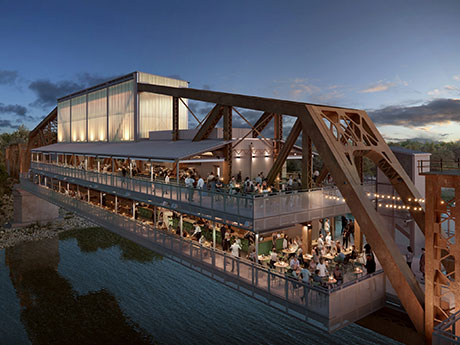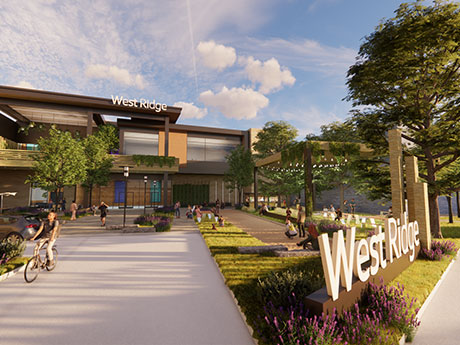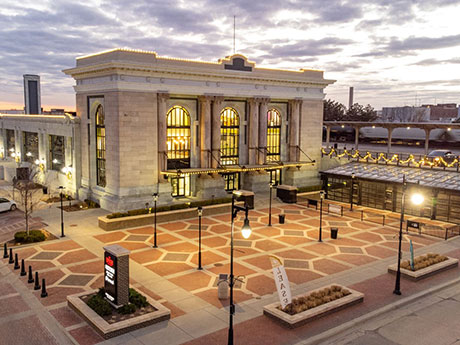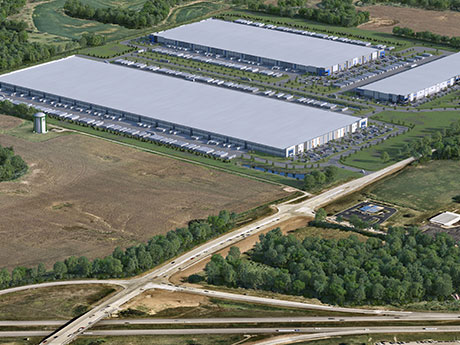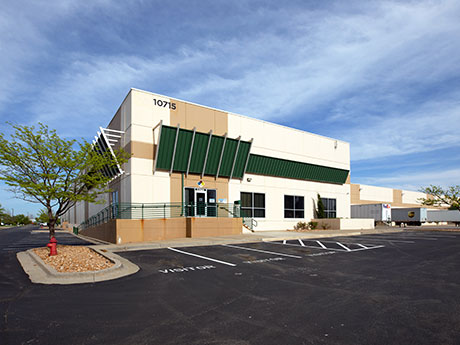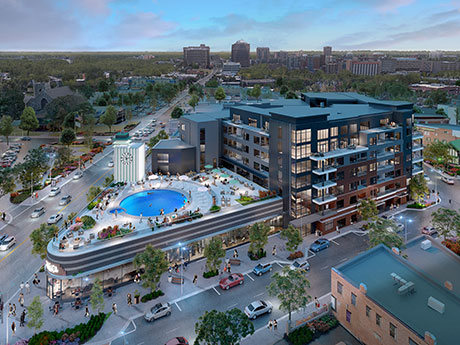By Joshua Turner, Landmark Commercial Real Estate The commercial real estate market in Wichita and South Central Kansas has shown remarkable resilience and growth in recent years. Following the challenges of the pandemic, the region has not only recovered but is now thriving. Wichita’s central location and business-friendly environment have long attracted investments in retail, office, industrial and mixed-use developments. Prior to the pandemic, low vacancy rates and steady rent growth indicated a strong and promising market. While retail and office spaces experienced temporary setbacks due to shifting work and consumer habits, the industrial sector remained active, fueled by e-commerce demand. The region’s lower costs and pro-business climate helped it weather economic fluctuations better than many larger metro areas. Since 2021, Wichita’s commercial real estate market has experienced an impressive resurgence. The industrial sector is booming, driven by manufacturing, logistics and distribution expansion. Retail has adapted to evolving consumer preferences, with experiential and mixed-use developments gaining popularity. Office spaces are being reimagined to accommodate hybrid work models, offering flexible solutions that meet modern business needs. Wichita’s population has steadily grown over the past decade, reflecting the city’s increasing economic opportunities and high quality of life. Currently home to nearly 400,000 …
Market Reports
By Garrett Cohoon, Block & Co. Inc. Realtors The commercial real estate activity in the Kansas City metropolitan area showed substantial growth in 2024 for the retail, multifamily and industrial sectors. The office sector is still seeing record vacancy rates, but the annual loss over 2023 is slowing down. According to CoStar, the office vacancy rate for 2024 is up 11.8 percent in Kansas City while the national index is at a 13.9 percent increase. That’s only 0.5 percent higher than last year in Kansas City and we expect to see that trend turn around in the next year. The retail sector saw new brands like Aritzia grow into the Kansas City market. Whataburger opened its 14th location in the past two years as drive-thru restaurants have continued to be a preference for consumers and investors alike. Wellness-based businesses and health clinics have also made good strides in the market. Kansas City has seen an increase in new experiential attractions this year, including national businesses like Puttery minigolf, Andretti indoor karting and SandBox VR. These new attractions have been key to many new development complexes and redevelopments of existing strip centers. Mattel also announced a new adventure park to be …
By Cody Foster, Advisors Excel Topeka, the capital city of Kansas, has a population of approximately 125,000 people, located in a 12-county region with over 531,000 residents. The region’s population has grown over the past five years and is expected to increase by another 2.1 percent between 2023 and 2028. With an unemployment rate of around 3.5 percent as of mid-2024, the city’s economic outlook remains stable, providing a solid foundation for redeveloping key commercial properties — including the West Ridge Mall, the third-largest indoor shopping center in Kansas at 992,000 square feet. Since it opened in 1988, the West Ridge Mall has been a significant part of the city’s commercial landscape. The site features ample parking and anchors the Wanamaker Road commercial corridor, the region’s most significant retail hub, which garnered $1 billion in retail, grocery and dining spending during the past 12 months. However, like many malls nationwide, it faces challenges in a rapidly evolving retail environment. Retail trends: following consumer behavior The West Ridge Mall has seen a steady decline in business and occupancy over the last decade. Anchor stores Macy’s and Sears closed in 2012 and 2018, respectively. Various management companies tried to keep the retail …
By Bob Ale-Ebrahim, Occidental Management Wichita has seen significant growth in the commercial real estate market for two years in a row. There have been sizable investments in downtown, new industrial campuses, medical offices and higher education institutions. These projects are spurring strong momentum in downtown Wichita. Wichita is a thriving hub of social, professional and cultural experiences with 350 new residential units under development with over 120 unique retailers and 4.1 million square feet of occupied office space. Add in the solid job growth, and Wichita continues to show significant signs of a solid and expanding economy. Projects recently completed include the WSU Tech National Institute for Culinary & Hospitality Education (NICHE), The Hudson St. Francis (event space), The Arcade and the Chester I. Lewis Reflection Square Park. Projects under construction include Hi-Tone Lofts, Sutton Place student housing and the Broadway Plaza AC Marriott Hotel. Projects in the planning stage are street improvements at Commerce and St. Francis streets, the Wichita Biomedical Campus, Wichita Transit multimodal facility, ballpark/riverfront stadium development, Exploration Place amphitheater and destination playscape, Delano Riverfront Stadium project and the Kingdom Building. Wichita’s economic development generated more than $418 million in capital investment in 2023 alone. Remarks …
By Max Helgeson, CBRE As the national real estate landscape undergoes transformative shifts, Kansas City has emerged as one of the region’s most attractive multifamily markets. There are a myriad of attributes making Kansas City an unrivaled destination to deploy capital in the heart of the Midwest. Here are six key areas that propel the market to the forefront of real estate investors’ considerations. Economic anchors, diversification Kansas City has one of the nation’s most diverse economies with no sector comprising more than 15 percent of overall employment. A national leader of several durable industries provides unmatched economic stability and significant risk mitigation for investors. Moreover, the metro’s strategic location in the heart of the U.S. and strong transportation infrastructure make it a favored logistical hub for corporations across the world. Finally, the market is a base for startups and entrepreneurs drawn to the area’s abundant talent pool and competitive office space rates. Strategic infrastructure, connectivity Infrastructure is a cornerstone of Kansas City’s rise to prominence. The city’s strategic network of highways, interstates, railways, fiber networks and a major airport not only facilitates connectivity but positions it as a hub for commerce. This strategic infrastructure acts as a magnet, pulling …
By John Faur, Newmark Zimmer The Kansas City industrial real estate market has been on a historical run since 2020 with over 40 million square feet of inventory added in that time frame. This run of new construction has catapulted Kansas City to the 15th largest industrial market in the country by square footage, despite only being the 31st largest MSA by population. During most of this period, the strong market dynamics which exist in Kansas City, such as strategic highway infrastructure, a centralized location, four Class-1 railroads, availability of bulk land sites and an active development community, were further amplified by the low-interest rate climate and record levels of tenant activity. The continued high pace of speculative industrial construction starts in 2022 positioned 2023 to experience a healthy amount of new deliveries, with almost 8 million square feet of speculative industrial space delivering to the market. While the financial markets presented opportunity during this run of growth, continuous rate hikes in 2023 created challenges that resulted in a significant decrease in year-over-year speculative construction starts (3.5 million square feet of speculative construction has occurred year to date in 2023 as compared with more than 13 million square feet in …
By Scott Bluhm, Newmark Zimmer Since 2016, the Kansas City industrial market has been on a hot streak. We observed more opportunities and increased user activity. There have been consistent years of record positive space absorption and the delivery of Class A buildings, whether speculative or build-to-suit. The peak of that hot streak was in 2022. The year concluded with records in positive absorption, vacancy and rental growth. By the end of 2022, Kansas City became the 15th-largest industrial market in terms of square footage, surpassing Seattle. Significant statistics for 2022: •Over 16 million square feet of positive absorption •A vacancy low of 3.6 percent •A 10.6 percent increase in rental rates The year 2023 has been unique due to economic conditions and uncertainty. New speculative construction starts are down approximately 70 percent, with around 2.5 million square feet breaking ground in 2023. Most of the speculative buildings delivering in 2023 were projects that began construction in 2022. Annual net absorption has decreased to 2.5 million square feet in the first and second quarters. For reference, the fourth quarter of 2022 saw a record-setting net absorption of approximately 7.3 million square feet, and the third quarter of 2022 had 3.2 …
By Ted Branson, Landmark Commercial Real Estate There continues to be strong demand and a resulting shortage of industrial buildings in Wichita from 1,000 to 100,000 square feet for lease or for sale, not dissimilar from the fierce competition for housing, with prospects paying well above market rates just to keep from losing out “again” on an available property. With that, Wichita is seeing vacancies continue near 5 to 6 percent, an increase in average lease rates from $4 to $6 per square foot, and average sales prices increasing from $35 to $50 per square foot. New construction prices carry that considerably higher. That demand for space, and the increasing prices that prospects will pay, often leads to land sales and new construction. Many of the supply chain issues that caused construction to take up to two years have been improved or resolved, and several projects are underway. Developers have built several speculative warehouses, most notably in the new ICT21 Industrial Park, the former location of the Derby Oil refinery. Ron and Marty Cornejo did a masterful job of clearing the site of structural obstacles and rendering pollution issues innocuous, with Conco erecting three first-class, tilt-up concrete, high-bay warehouses, with …
By John Hassler, Newmark Zimmer At the close of 2022, Kansas City’s industrial property market hit heights that would have been unimaginable only a decade prior. While Kansas City ranks as the 31st-largest MSA in the United States by population, it is the 16th-largest market nationally based on industrial square footage with nearly 315 million square feet of total inventory. Further, Kansas City ranks 10th nationally in the percentage of annual net absorption as compared with its market size and has added an impressive 62.5 million square feet of newly developed square footage over the last 10 years. Many factors have contributed to the market’s growth trajectory including the nation’s most geo-central location (a two-day truck drive to 85 percent of the continental U.S. population), the confluence of five Class-1 railroads (with four area intermodal centers), the intersection of four of the nation’s busiest interstates (including I-35 and I-70), an available and reasonably priced workforce, an abundance of industrial development sites in pro-development communities, and an experienced, well-capitalized concentration of developers headquartered in the area. Kansas City has leveraged those various logistical and strategic advantages at a perfect time to capitalize on an all-time high in industrial space demand with …
By Chris Armer, Hoefer Welker People who call the Kansas City metropolitan area home know it’s a desirable place to live. From the robust job market and vibrant arts scene to its rich history and, of course, stellar sports teams, the Kansas City metro area attracts a diverse group of people. Kansas City is evolving and so are its housing needs. In recent years, the demand for multifamily development in Kansas City has grown, driven by a range of factors. Mass retirements and flexible work arrangements are shifting priorities, while the housing shortage and rising interest rates are sending prospective homeowners on the search for attractive alternatives. The multifamily housing trend stands to gain momentum, creating a space for discerning real estate and architecture firms with development expertise to pave the way in an evolving housing market. The great shuffle Much has been said about the Great Resignation, but the COVID-19 pandemic didn’t only affect young and midlife workers who left their jobs to pursue higher-paying and more meaningful employment. It also hastened the Great Retirement, a massive wave of baby boomers leaving the workforce, many of them earlier than planned. Now those homeowners are selling their suburban single-family …
Newer Posts



